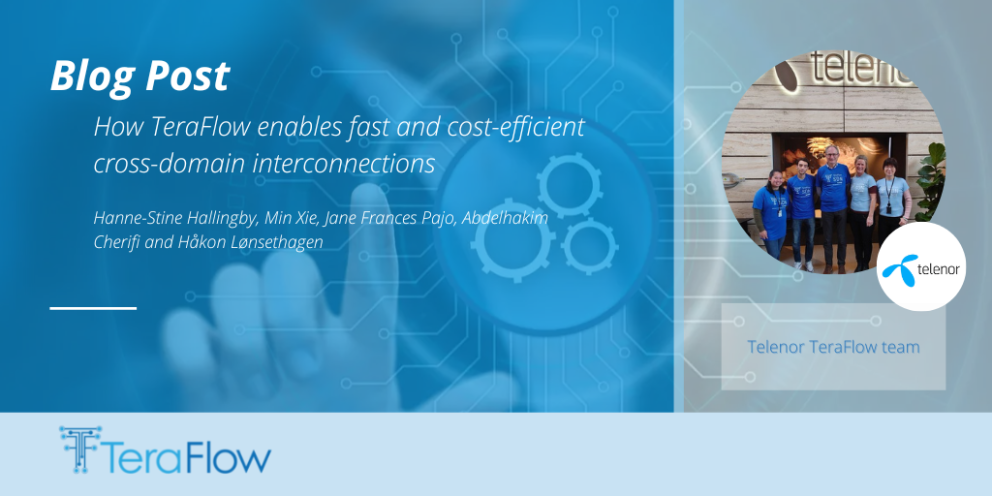As a mobile operator, Telenor sees us as a potential operator of transport network slices. Currently there is vendor lock-in where vendors offer proprietary hardware (HW) with embedded network applications/software (SW) and network management systems (NMS) and interfaces. From our point of view, the incompatibility induced by proprietary solutions introduces not only high costs but also long elapsed time when deploying and operating network slices across HW and SW providers. This is a pain, as we anticipate a high demand for 5G, and later 6G services. In turn, a market that does not take off may affect all other providers in the ecosystem. TeraFlow has addressed this challenge, with an open-source SDN controller, now approved as an ETSI open-source group. Eventually, we hope that TeraFlow may lead to consensus-based standards which cater to full compatibility.
Recent posts

The challenge brought by incompatibility is magnified when customers require cross operator services, e.g. a virtual reality (VR) application for end-users localized in different operators’ networks. In this case, a connectivity service is needed, e.g. as an inter-domain slice, in an on-demand way, to fulfill the service level agreements (SLA) appropriate for this VR application. If the SLA is assured, the end-users’ perceived value for the VR applications will increase, which probably attracts other users beyond the operators’ own domain. This is known as direct network effect. In contrast, if the connectivity service cannot be provided in the inter-domain level, the interest and even investments in services such as VR may be slowed or decreased.
Even though operators and VR application providers prefer full compatibility in order to explore the full value, the competitive forces in markets with switching costs and network effects may slow down or stall market growth. It is tempting to try to keep the market exclusive, as one provider may succeed with tipping the market into using its proprietary solutions as a de-facto standard. This is the winner-takes-all scenario. We suggest that operators are better off pursuing compatibility. However, this calls for operators’ joint efforts regarding technological standardization, and a governance structure which caters to commercial aspects.
In the short run, joint experimentation and testbeds supported by both operators and application developers/providers are means to create shared views on the benefits of compatibility. Together, operators and providers can explore and verify how full compatibility can be achieved in an inter-domain environment with high complexity. As we speak, this has taken place in TeraFlow, and now also in the ETSI TeraFlow open-source group. The work lays the ground for scaling inter-domain connectivity with SLAs in full operation. In the long run, governance models like operator federation will cater to necessary level of SLAs and commercial contracts.
